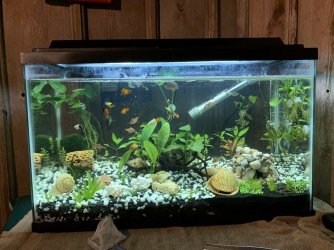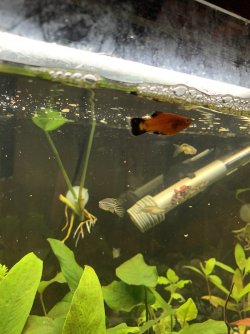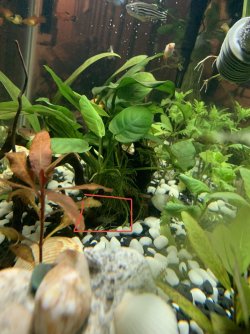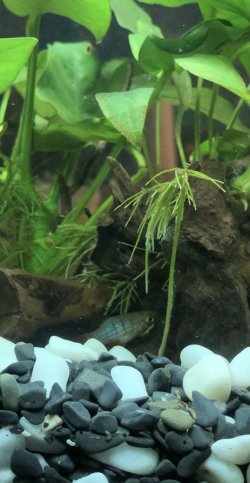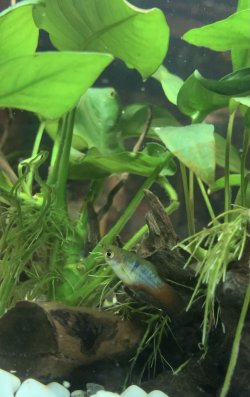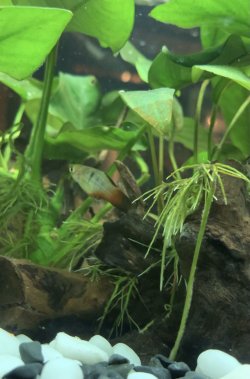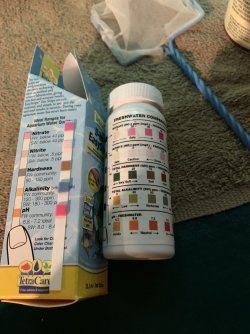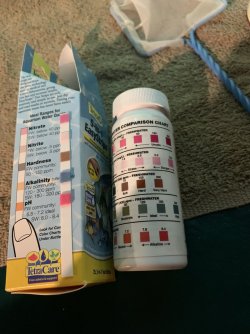Sweet_Sassy
New Member
I have a total of 9 plattys, 2 males and 7 females. The one male is blue and the other is orange and both seem to not like being around the females and other fish in the tank. The blue is newer than the orange and when I first got the orange he stayed away from the rest of the group and now he seems to be okay. Now I'm noticing that the blue platy isn't swimming with the rest and is hiding under my driftwood. He comes out when it's time to eat and I've seen him eating with the rest, he just doesn't like to swim with them all any other time. I was just curious if there was anything I should be worried about surrounding this behavior and if he will start getting comfortable over time or if he is sick and I need to treat him. When I first got the orange male I'm pretty sure he had a fungus or something since the ends of his tail and dorsal fins were white and they were really short. He looks normal now and his fins are grown out. I added the blue one and 6 females last week and the females are all doing well and seem to be pregnant already (which I don't mind since I enjoy the babies). These 9 plattys are in a 29 gallon with 5 red minor tetras, 5 danios, 3 green cory catfish, 2 khuli loaches, 5 mystery snails, a dwarf gourami, and a male beta (both the gourami and beta are VERY peaceful and have never nipped at each other or the other fish. All of the fish are friendly towards each other except for a few fin nips here and there between the 5 danios which I see as normal behavior) I did however have an outbreak of mini ramshorn snails and I've been digging around in the tank to pluck them out and I did also notice that I had a few damselfly nymphs that ate all my shrimps (I have since then caught 5 nymphs but I might have more idk). I have an aqueon 20 filter, a heater, and a light that I turn off every night. They are fed every morning and night and eat their food after about 15 minutes. I think my blue platy is beautiful and I really love all of my fish so I want to make sure that he will be okay. This tank has also been cycled for a few months and I haven't had any problems with any other fish. I hope I have provided enough information to receive some help. Thank you so much!! Let me know if you need better or different pictures, I did the best I could.
